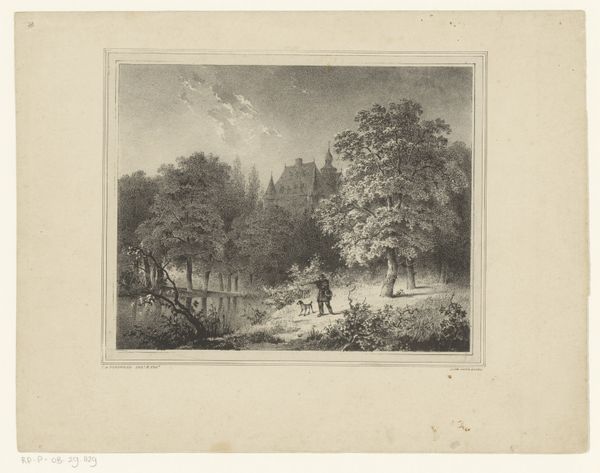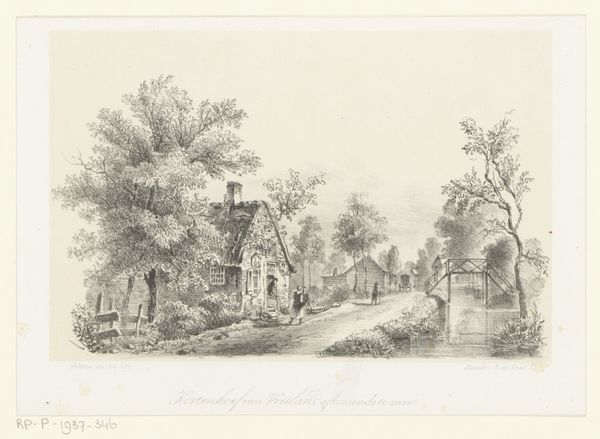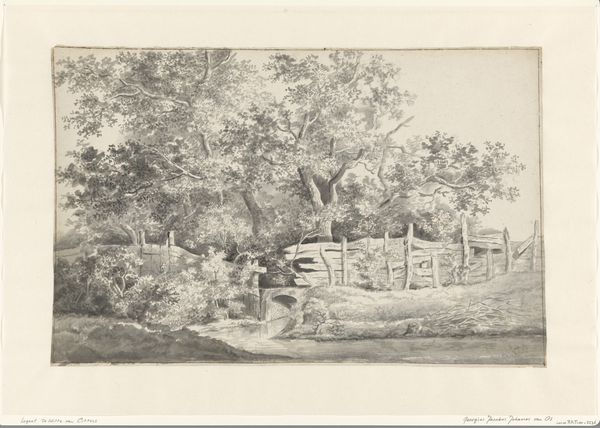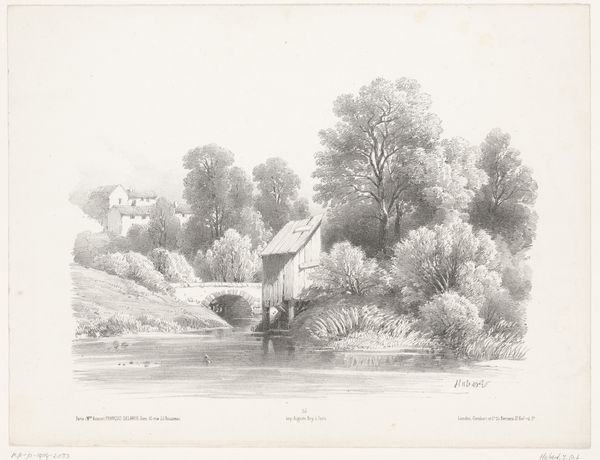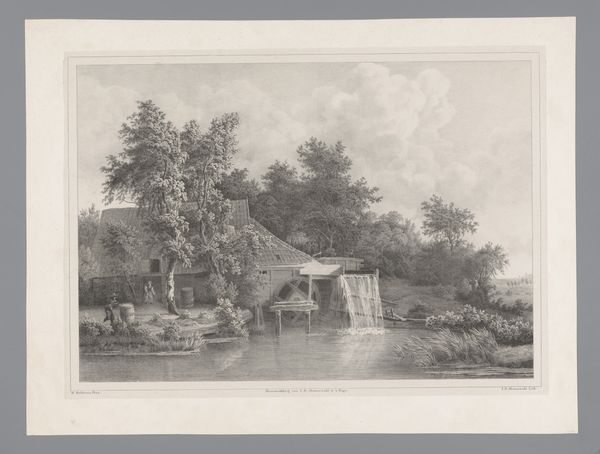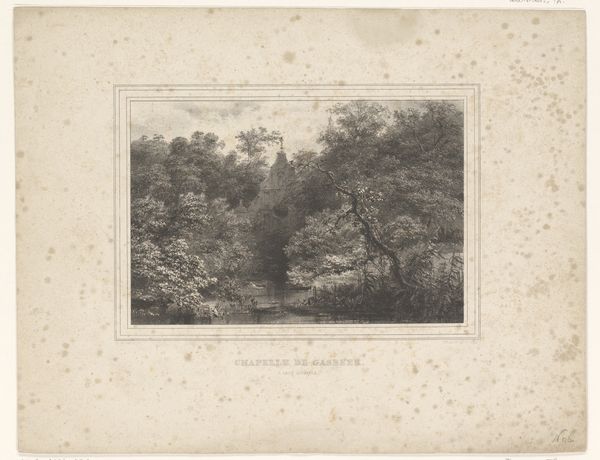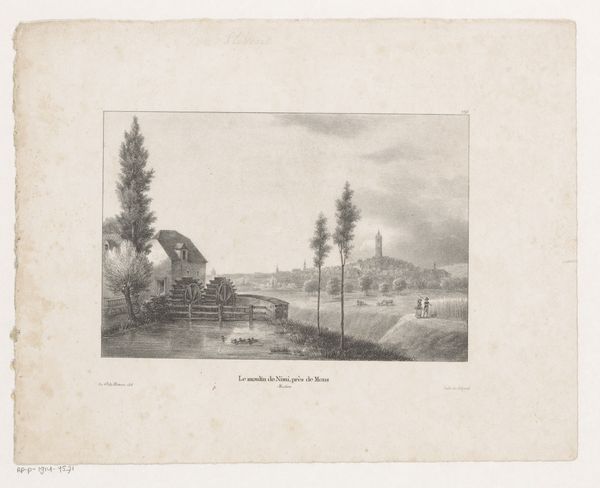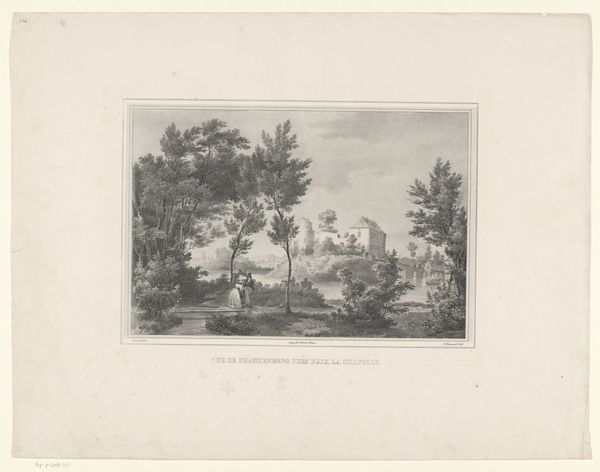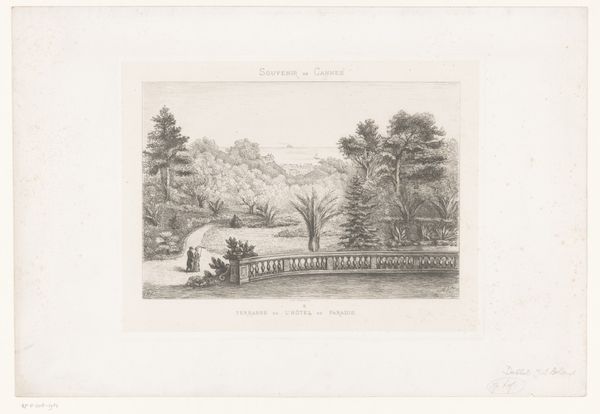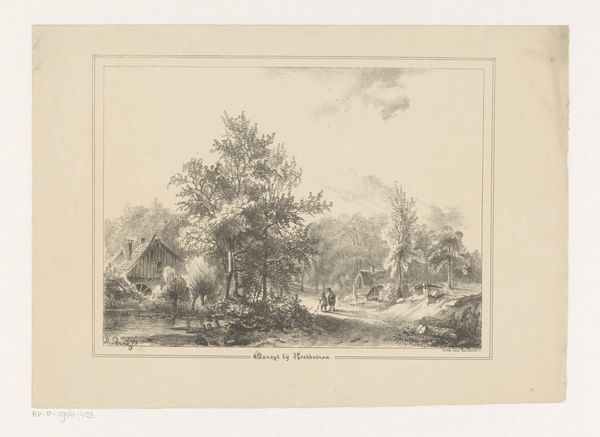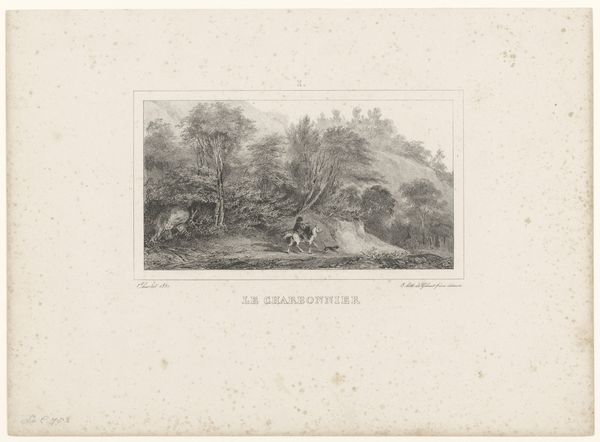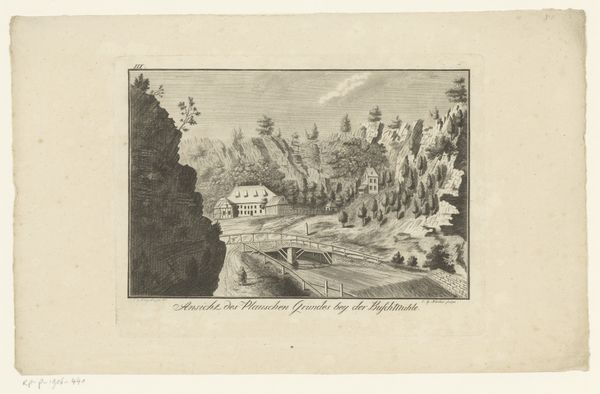
drawing, print, pencil
#
pencil drawn
#
drawing
# print
#
landscape
#
pencil
#
line
#
cityscape
#
academic-art
#
realism
Dimensions: height 145 mm, width 207 mm
Copyright: Rijks Museum: Open Domain
Johan Diderik Cornelis Veltens made this print of Kortenhoef. The image offers us a carefully constructed vision of Dutch rural life. Made in the nineteenth century, the print’s visual codes, cultural references, and historical associations are deeply rooted in the Dutch landscape tradition. The church spire anchors the scene, emphasizing the central role of religion in the community. The modest cottages and figures suggest an idyllic, harmonious society. The unpaved path speaks to a life before the industrial revolution. What’s fascinating is how this image intersects with the art institutions of the time. The picturesque style, the detailed rendering, and the celebration of rural life were all highly valued by the art academies and salons of the day. Prints such as this one played a crucial role in shaping and disseminating a particular vision of Dutch identity. For the art historian, understanding this print involves delving into archives, studying exhibition catalogues, and exploring the writings of contemporary critics. Only then can we fully appreciate the social conditions and institutional forces that shaped its creation and reception.
Comments
No comments
Be the first to comment and join the conversation on the ultimate creative platform.
